Recently Sean and I took a quick trip down to Bellingham, Washington, to meet up with a friend. While we were wandering around a beachfront park, we encountered this beautiful spider under the loose bark of a tree. I didn’t recognize it, and we didn’t have our field guide with us, so it wasn’t until we got home that we were able to identify it as Segestria pacifica – a member of the tube web spider family Segestriidae.
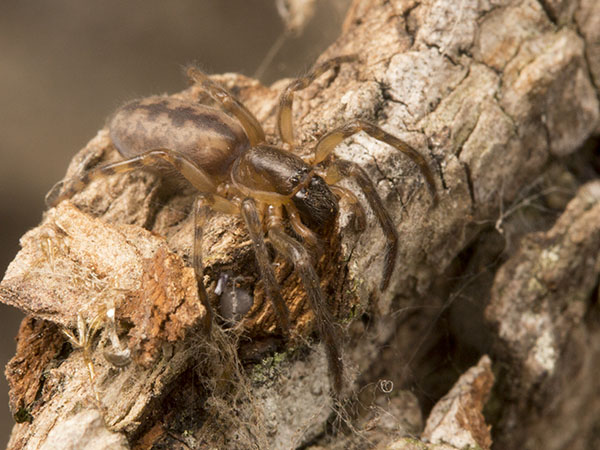
Segestria pacifica. This species is the one member of the family Segestriidae that can be found in British Columbia, but we’ve never encountered it before. (Photo: Sean McCann)
Segestriids are closely related to spiders in the family Dysderidae (which includes the common woodlouse hunter, Dysdera crocata). Like dysderids, segestriids have only 6 eyes. You can see the characteristic eye arrangement in the photo below – it looks like the pair of eyes that should be at the front and centre of the spider’s face are missing.
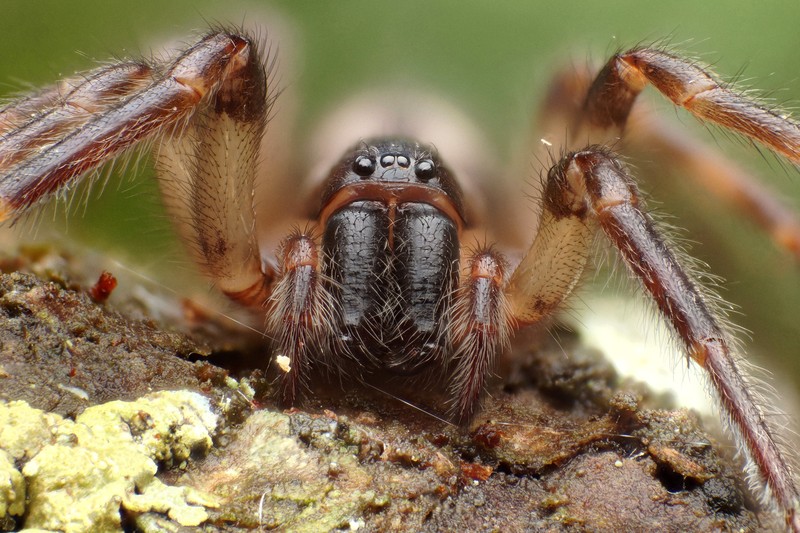
Nice portrait of Segestria pacifica showing the eye arrangement and hairy chelicerae. (Photo: Kyron Basu, licensed under CC BY-ND-NC 1.0)
Spiders in this family also have the unusual habit of resting with their first three pairs of legs pointing forward and the last pair pointing back (most spiders do two pairs pointing forward and two pairs pointing back).

Segestria pacifica resting in the characteristic pose with six legs forward, two legs back. (Photo: Sean McCann)
Segestria florentina (sadly not found in North America) has beautiful irridescent green chelicerae. The function of this striking colouration is not clear – it’s unlikely to be for catching the eye of a potential mate, because these spiders have poor vision and rely mainly on vibratory and acoustic communication. What we do know is that this structural colour is produced by parallel layers of chitin that reflect different wavelengths of light (called a multilayer reflector). The mechanism is the same one that gives these beautiful beetles their green irridescence.
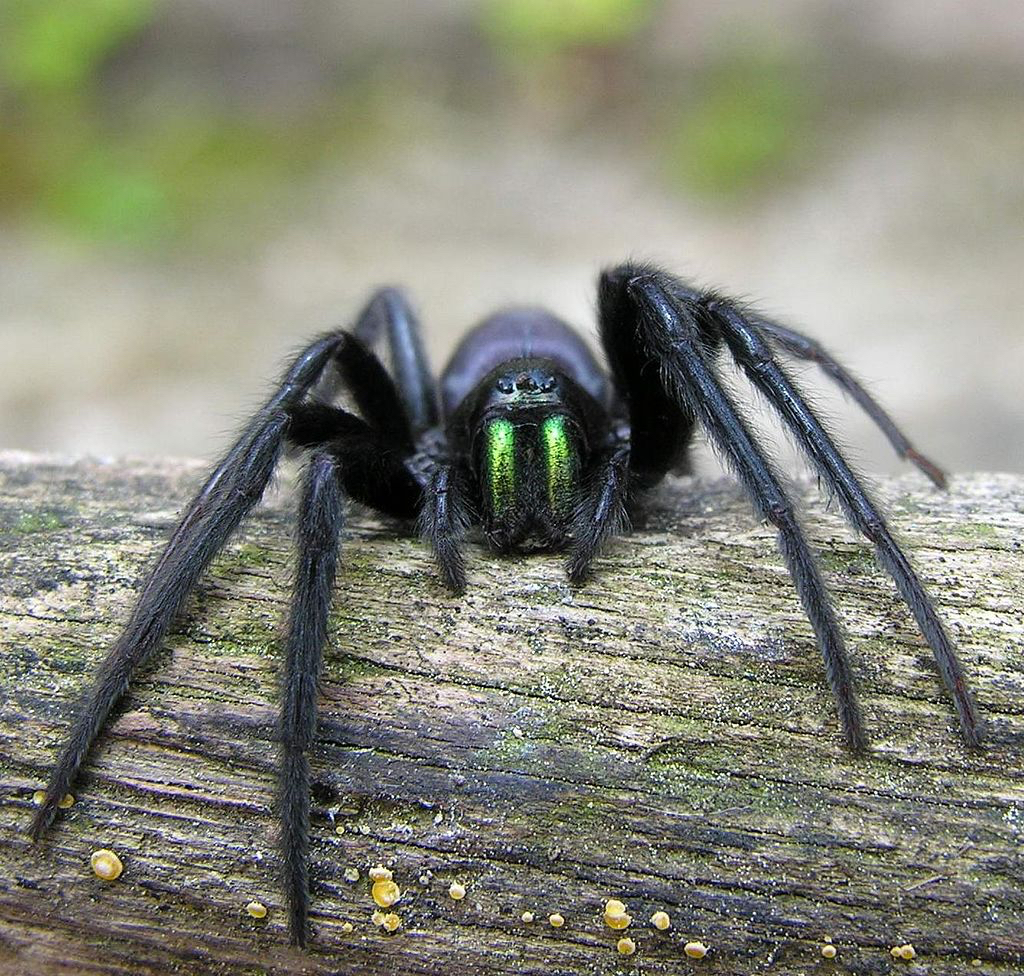
Segestria florentina female showing off her beautiful irridescent green chelicerae (Photo: Luis Miguel Bugallo Sánchez, licensed under CC BY-SA 2.5 ES)
Segestriids are nocturnal and build their tube webs in crevices, often in the cracks of rock walls, under loose tree bark, or in the ends of broken branches. Several signal threads are arranged radially around the opining of the tube-web. The hunting spider sits near the entrance of the tube, waiting for prey to make contact with one of her trip lines. This contact transmits vibrations through the silk to the spider’s sensitive feet, six of which rest near the opening of the web, allowing her to determine the exact location of the prey.
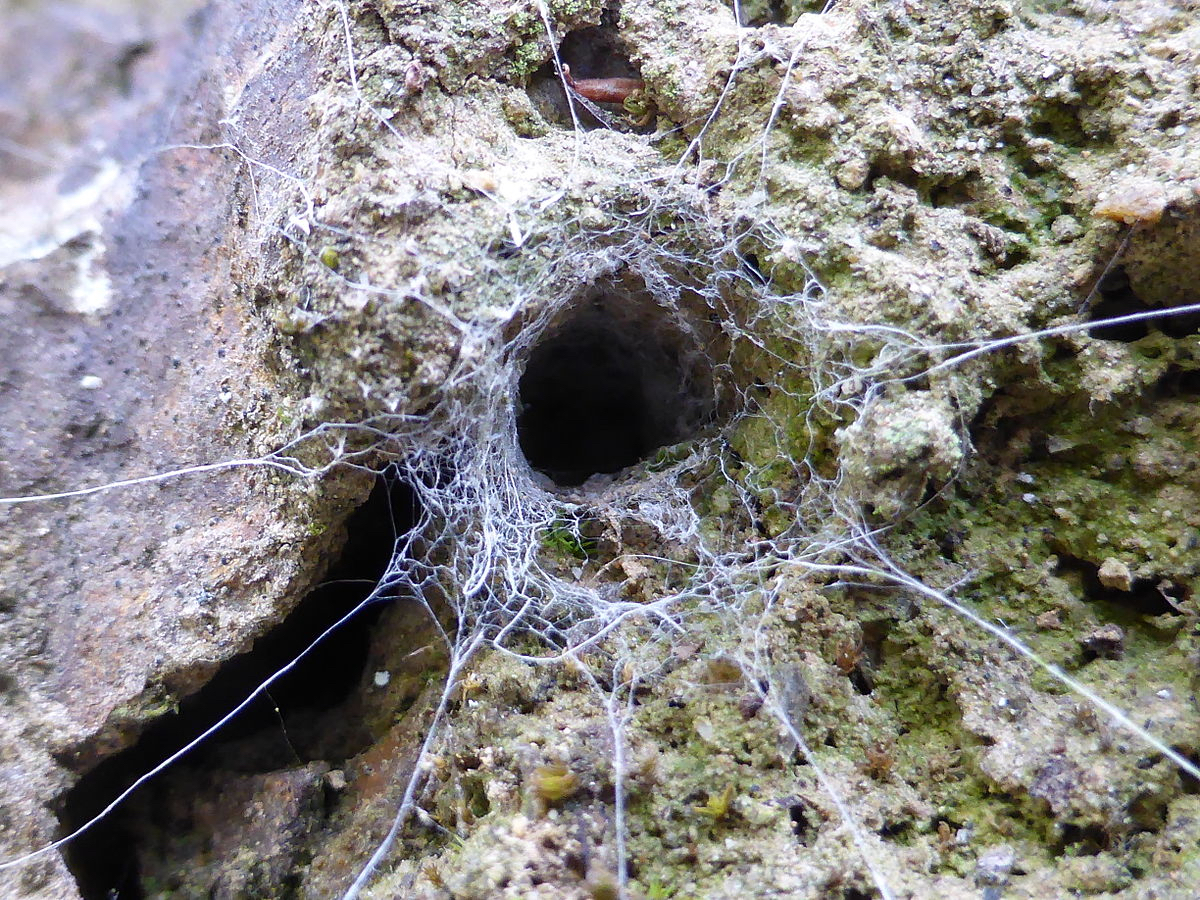
Tube-web of Segestria senoculata (Photo: Totodu74, licensed under CC BY-SA 3.0)
“Corolla spiders” in the genus Ariadna live in the Namib Desert, and have modified their tube webs to include a circle of stones around the entrance. Here the trip lines are very short, and are all attached to the small stones circling the web entrance. The function of the stones is essentially the same as the silk signal lines of a regular tube web, which would not be very effective in the desert because of the constantly shifting sands and gravel. The stone circle solves this problem. When prey brushes against one of stones in the circle, vibrations are transmitted to the spider and it rushes out to dispatch them. The corolla spiders apparently preferentially select quartz crystals for their signal stones – these may direct vibrations from prey more effectively than other kinds of stones.
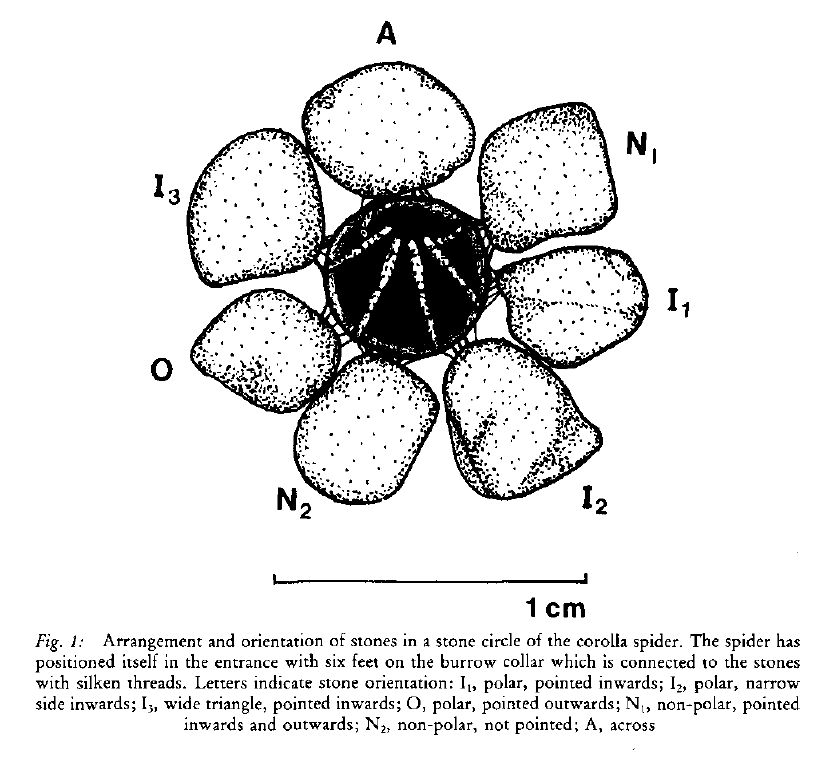
Fig. 1 from Henschel (1995) showing the stone circle built by corolla spiders in the Namib desert. The drawing shows the position of the six forward-facing legs of the hunting spider resting just inside the mouth of the burrow.
Females in this family don’t build a traditional egg sac but deposit a mass of eggs in the tube web and then cover them with silk. Very little else seems to be known about the natural history of these spiders, although apparently they are quite easy to keep in captivity, and females can live for several years.

References:
Adams, R. J. (2014). Field Guide to the Spiders of California and the Pacific Coast States. University of California Press.
Henschel, J. R. (1995). Tool use by spiders: stone selection and placement by corolla spiders Ariadna (Segestriidae) of the Namib Desert. Ethology, 101(3), 187-199.
Ingram, A. L., Ball, A. D., Parker, A. R., Deparis, O., Boulenguez, J., & Berthier, S. (2009). Characterization of the green iridescence on the chelicerae of the tube web spider, Segestria florentina (Rossi 1790) (Araneae, Segestriidae). Journal of Arachnology, 37(1), 68-71.
